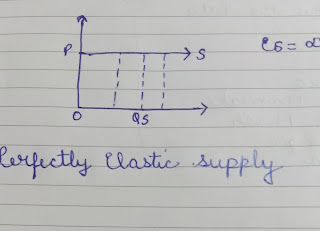 |
| Coordination |
Coordination..
Coordination is the process of maintain the balance and harmony between the different individuals and departments of an organization in order to attain organization goals.
Coordination's main aim is to achieve the goals of organization by maintain the discipline and harmony in organization.
Coordination maintain healthy relations between employees ,they work together and fulfill organization goals."Coordination is not a function it is compulsory element which should be compulsory between employees in performing management functions "
Coordination is ..
1) Coordination is the essence of management.
2) Coordination is involved in every function of management and hence should not be regarded as one of its functions.
3) Planning,directing ,organising , staffing and controlling all involve coordination.
Coordination is different from cooperation; Cooperation is voluntary collective action to serve a common purpose,Whereas , coordination is an art of synchronisation of
efforts so that the common goals is attained.
Without coordination every employee work in their own way ever employee work in their own direction so the organization goals will not be achieved.
Types of Coordination..
1) Internal Coordination..
2) External Coordination..
1) Internal Coordination -When coordination is between different departments, sections,units, employees,branches within the organization is called Internal Coordination.Internal Coordination is again classified in two types:-Vertical & Horizontal
Coordination.
Vertical Coordination-Coordination between different persons at different levels of management (different designation)hierarchy is known as vertical Coordination.
External Coordination -Coordination between different departments at the same level(same designation) in the organization's chain of command is called external Coordination.
Techniques of maintain Coordination between different activities and departments in the enterprise are these:-
1) By Supervision -Manager must have skill to supervise the work and bring coordination.While supervising, the manager is to see that subordinates synchronizes and coordinate their efforts among themselves and also in relation to other groups.
2) By through the process of Organization - Organization is very powerful device for achieving coordination, Whenever activities are grouped and assigned to subordinates,the idea of coordination is uppermost in the mind of the manager.
When manager make organization he make groups and assign duties in such a way so that coordination is easily maintain.
3) By Personal Contact -Personal contact is another most important technique of maintain Coordination . Coordination is achieved through interpersonal, horizontal relationships of people in the organization.People co-operate better when they understand each other's tasks.
4)By Communication -Communication is also very useful method to achieve coordination.Communication through letters, reports etc through communication employees and managers exchange information, grievances, reports easily so coordination is easily achieve.
External Coordination -A large number of external forces have great impact on success and failure of business.So businessmen pays very much efforts in analysing external forces,after analysing the external forces preventive measures are taken so that the enterprise can effectively cope up with them .The important external forces are interest of customers, investors, employees, competitive situation, technical advances, government policies and coordination can be achieved in many ways:-
1) Shareholders, debenture holders and creditors comprise investors of any company.Management should pursue the policy of promoting good relations with investors so there is continuity of funds availablity.
2) With customers and employees also the problem of coordination is largely that of improving relations with them.Genuine please should be solved customer interest is largely coordinated with the enterprise through product publicity, marketing research in market oriented planning.
3) There must be coordination of the enterprise with other business units,such as suppliers,goods carriers.
Characteristic features of Co-ordinating...
1) Coordination is a continuous process .It is not come to an end ,there should be always coordination in managers, employees to attain organization goals.
2) Applies to group effort -Coordination is not apply in individual,it is apply in group effort,when they work together coordination is applied.
3) Common purpose -The ultimate purpose of coordination is to achieve common purpose or to attain organization goals.
4) Universal - Coordination is required in all organisations.At every level Coordination is necessary.Without coordination goals of organization cannot be achieved.
5)Not a function,it is essence of management - Coordination is not a function which have to be performed or complete ,it is a essence it means there is Coordination between managers and employees when they work together to achieve organization goals.they maintain good relations and harmony between them.
How Coordination is different from Co-operation?
1) Coordination is a process of synchronising and integrating the efforts of individuals in an organisation in order to attain organization goals.
Cooperation is a collective will of people in an organisation to contribute to for achieve organization goals.
2) Coordination is rational and logical, Whereas
cooperation is voluntary and emotional.
3) Cooperation is achieved by the will and attitude of the individuals .
Coordination is achieved by managers skills and efforts.
4) Cooperation is not depend upon coordination.Cooperation can be achieved without coordination but coordination can be achieved through cooperation.
Essentials of Coordination..
a) Direct contact
b) Early stage coordination.
c)Continuity.
d)Well defined objectives.
e) Clear lines of authority.
f) Sound Organization structure.
e) Cooperative behaviour.
f) Effective communication system.









